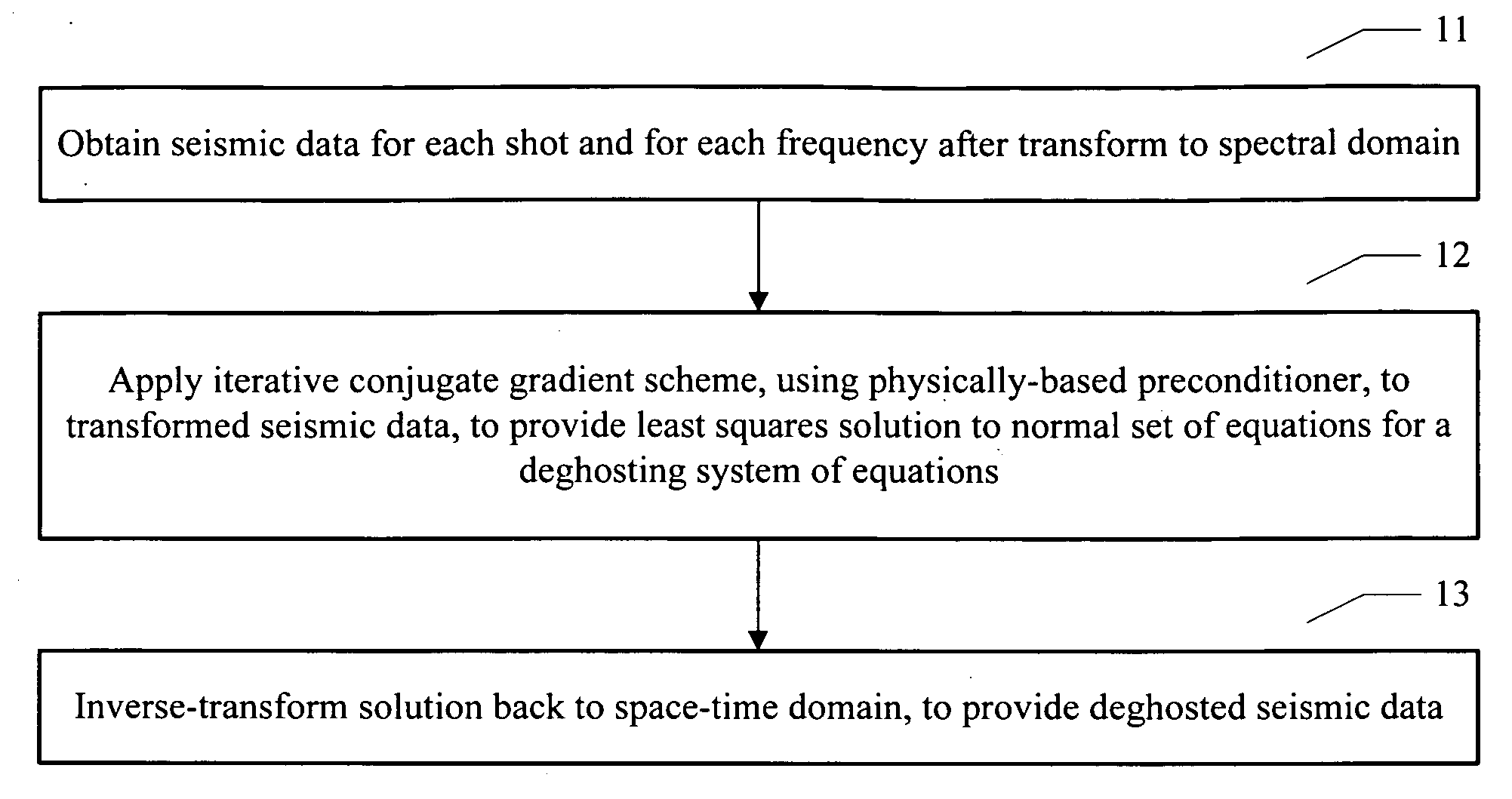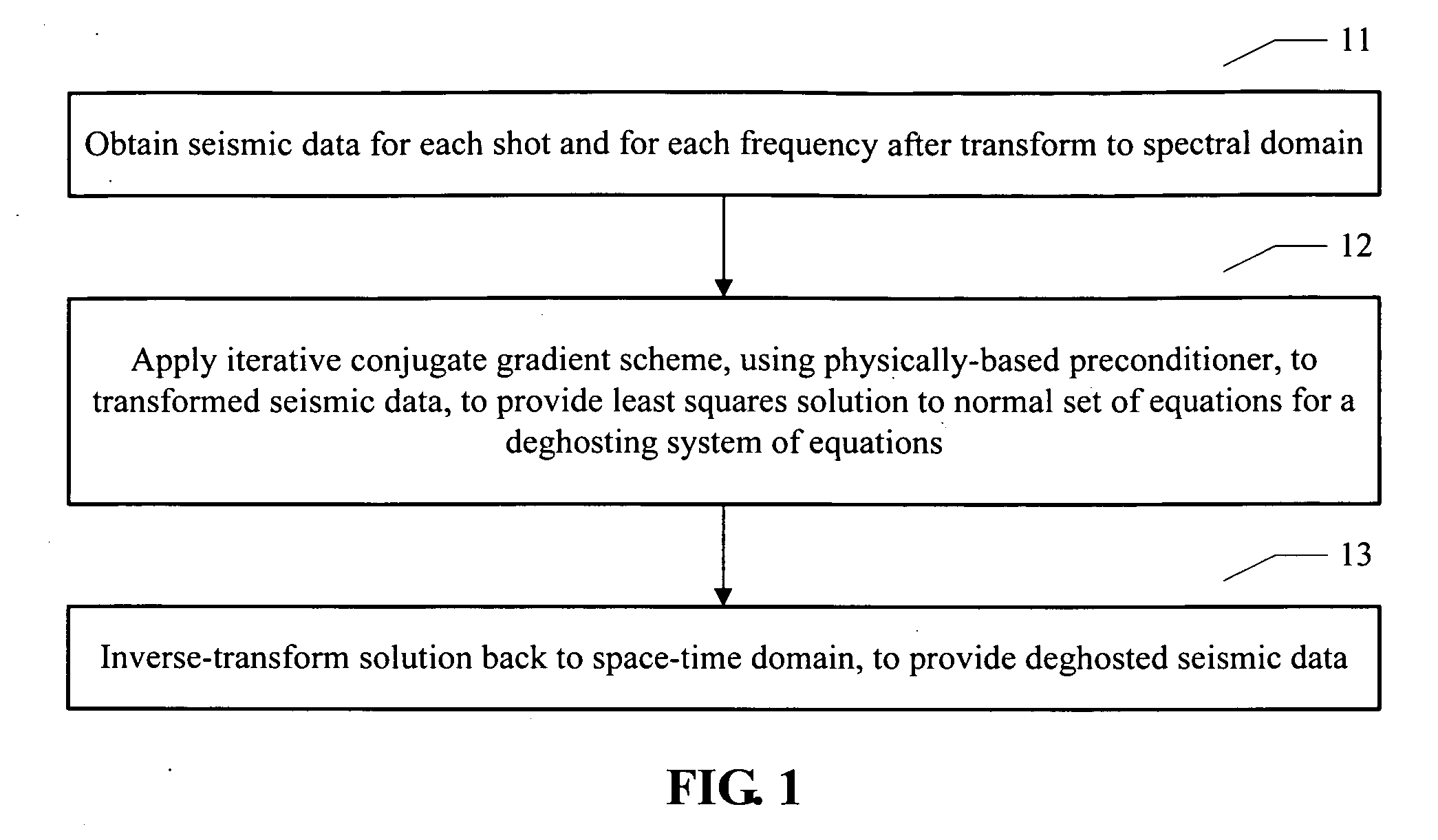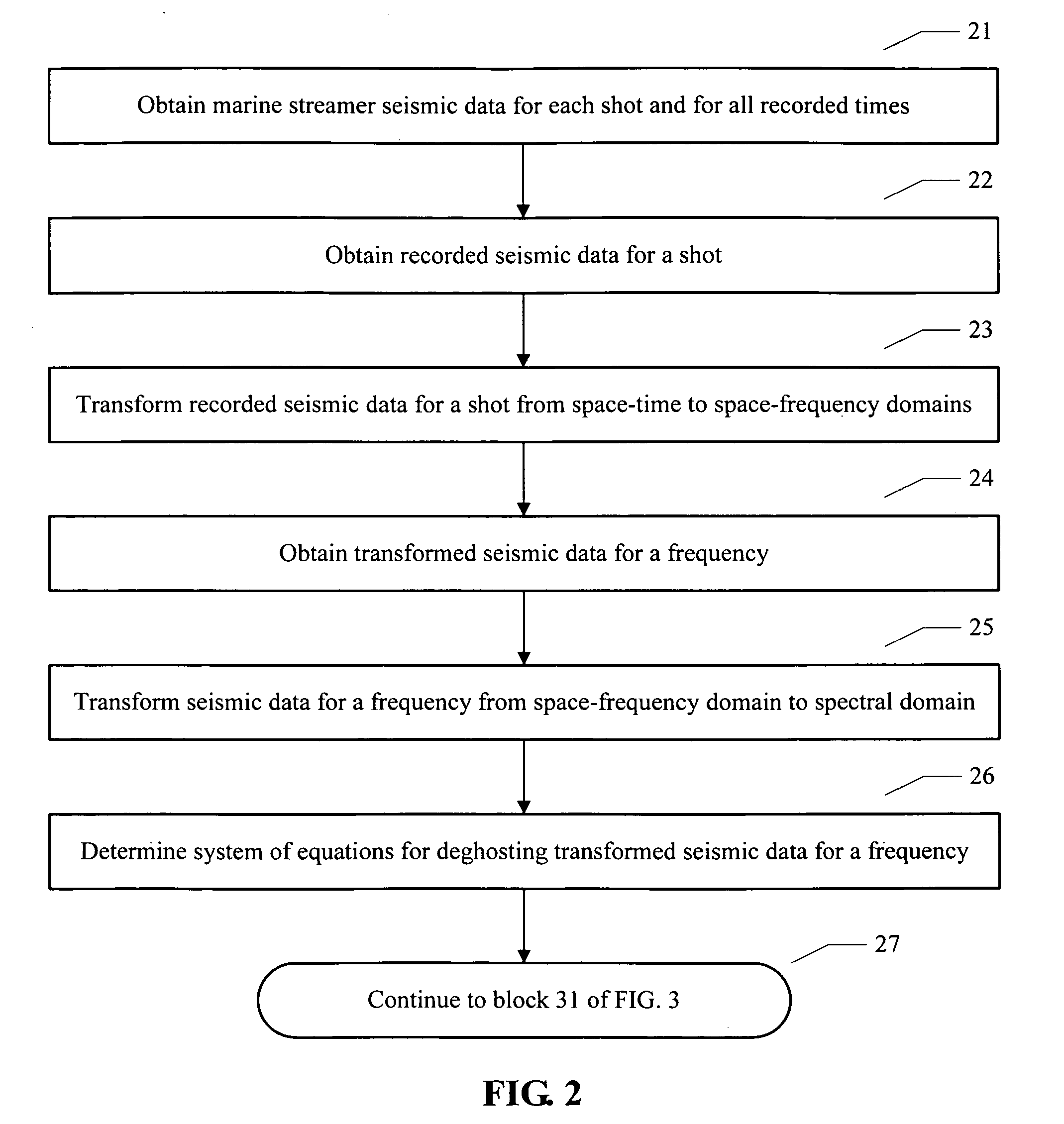Method for deghosting marine seismic streamer data with irregular receiver positions
a streamer data and receiver position technology, applied in the field of geophysical prospecting, can solve the problems of affecting the accuracy of seismic streamer data, and difficulty in recording data outside a selected bandwidth,
- Summary
- Abstract
- Description
- Claims
- Application Information
AI Technical Summary
Problems solved by technology
Method used
Image
Examples
first embodiment
[0030]FIG. 1 is a flowchart illustrating the invention for deghosting marine seismic streamer data recorded at arbitrary receiver positions.
[0031]In block 11, seismic data are obtained for each seismic source activation and for each frequency after being transformed to a spectral domain.
[0032]In block 12, an iterative conjugate gradient scheme, using a physically-based preconditioner, is applied to the transformed seismic data, to provide a least squares solution to a normal set of equations for a deghosting system of equations.
[0033]In block 13, the seismic data are inverse-transformed back to a space-time domain to provide deghosted seismic data.
second embodiment
[0034]FIG. 2 is a flowchart illustrating an initial portion of the invention for deghosting marine seismic streamer data recorded at arbitrary receiver positions. The final portion will be discussed below with reference to the flowchart in FIG. 3.
[0035]In block 21, seismic data recorded with a marine streamer are obtained. The receiver data for each shot (seismic source activation) position, and for all recorded times t, is taken as input seismic data. The spatial position of the receivers in a Cartesian coordinate frame is given by xR=(x1R,x2R,x3R). In the invention, the receiver depth x3R=(x1R,x2R) is a single-valued function of the horizontal coordinates x1R and x2R. Thus, the streamers are not vertical, but not necessarily horizontal. Further, in the invention, the horizontal coordinates x1R and x2R can be irregularly-positioned. Thus, the horizontal positions of the receivers in the streamers are not necessarily in a regular grid pattern.
[0036]In block 22, recorded seismic data...
PUM
 Login to View More
Login to View More Abstract
Description
Claims
Application Information
 Login to View More
Login to View More - R&D
- Intellectual Property
- Life Sciences
- Materials
- Tech Scout
- Unparalleled Data Quality
- Higher Quality Content
- 60% Fewer Hallucinations
Browse by: Latest US Patents, China's latest patents, Technical Efficacy Thesaurus, Application Domain, Technology Topic, Popular Technical Reports.
© 2025 PatSnap. All rights reserved.Legal|Privacy policy|Modern Slavery Act Transparency Statement|Sitemap|About US| Contact US: help@patsnap.com



